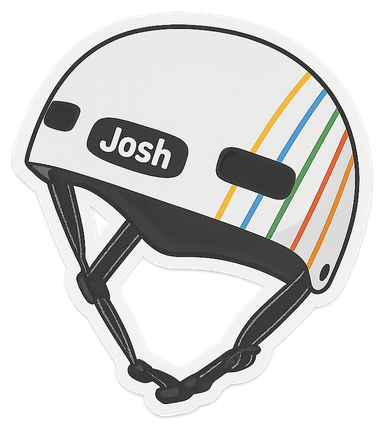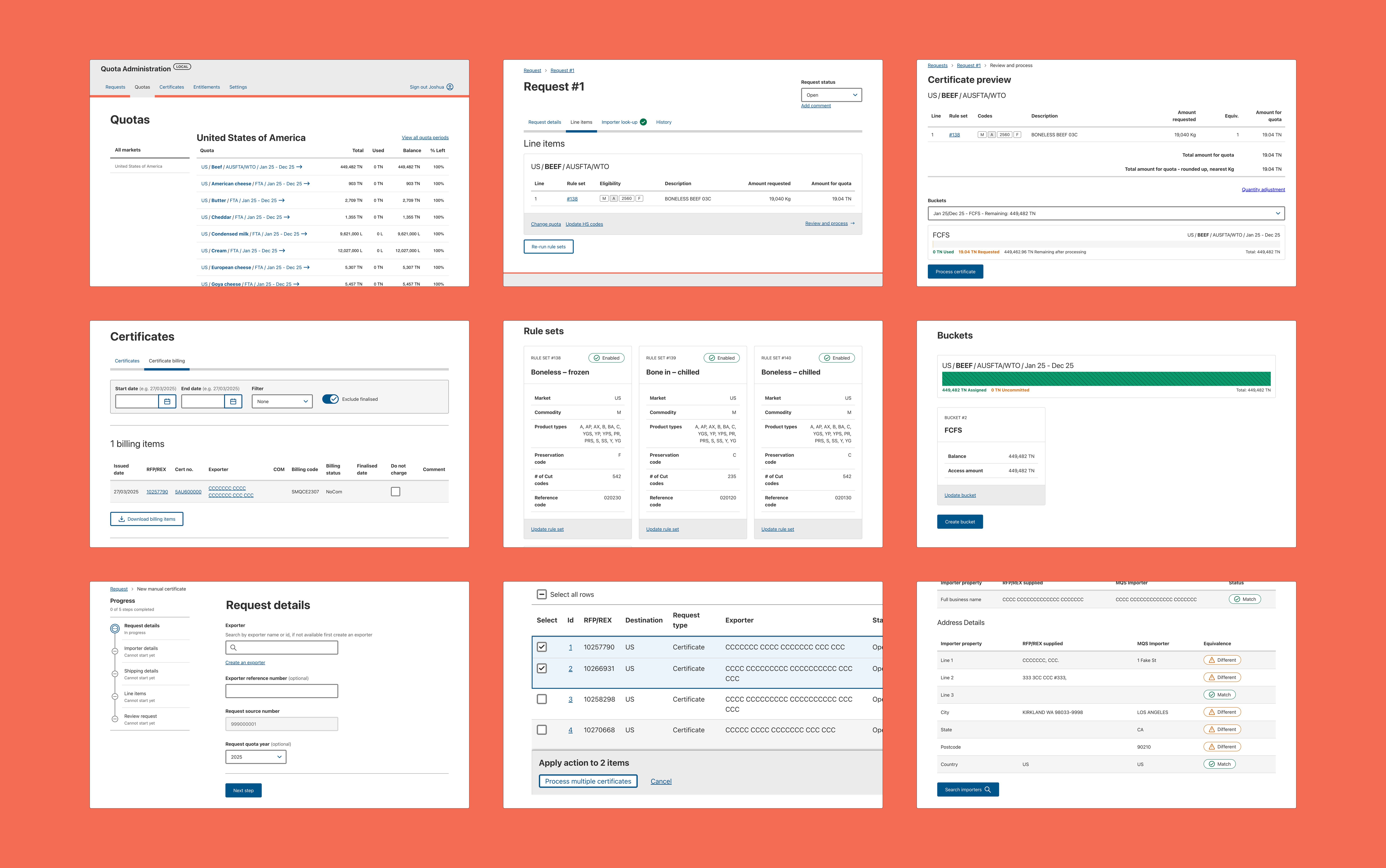Modern Quota System
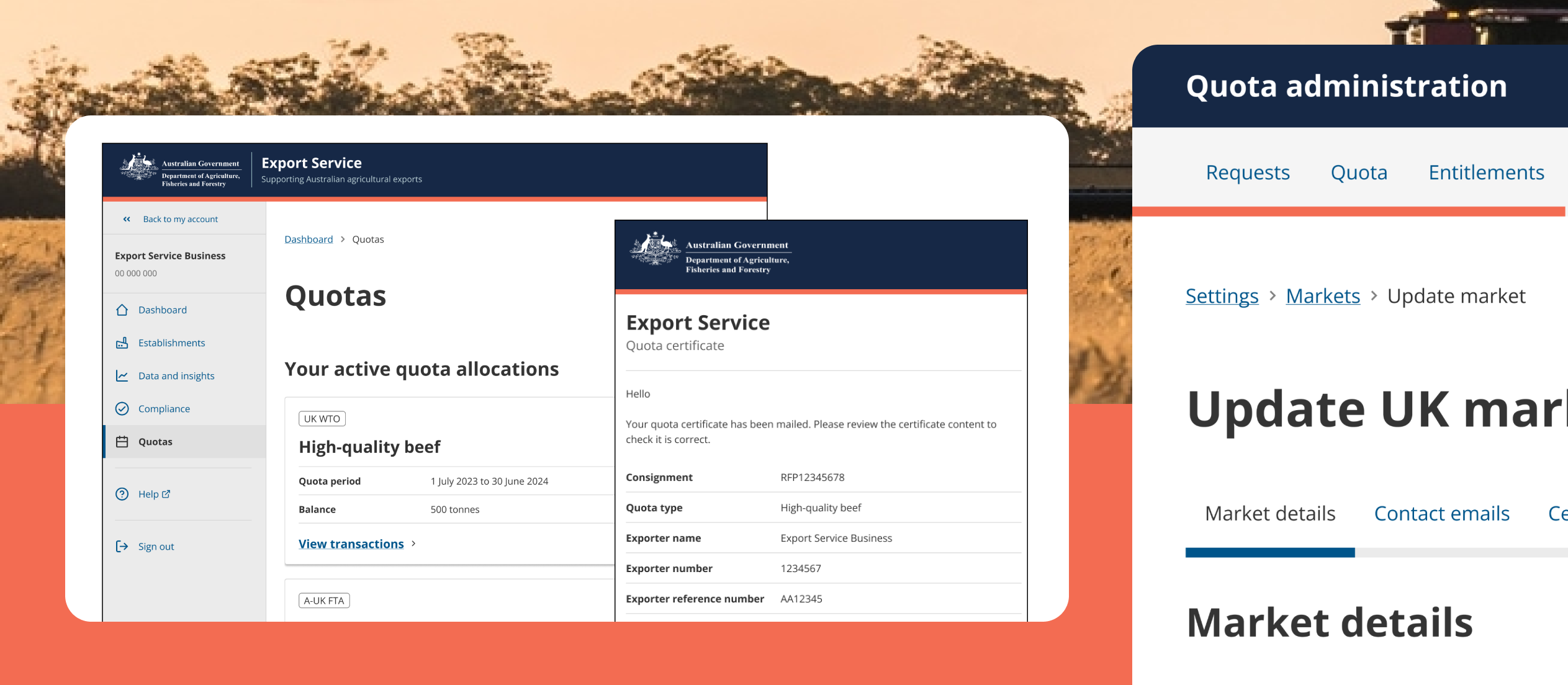
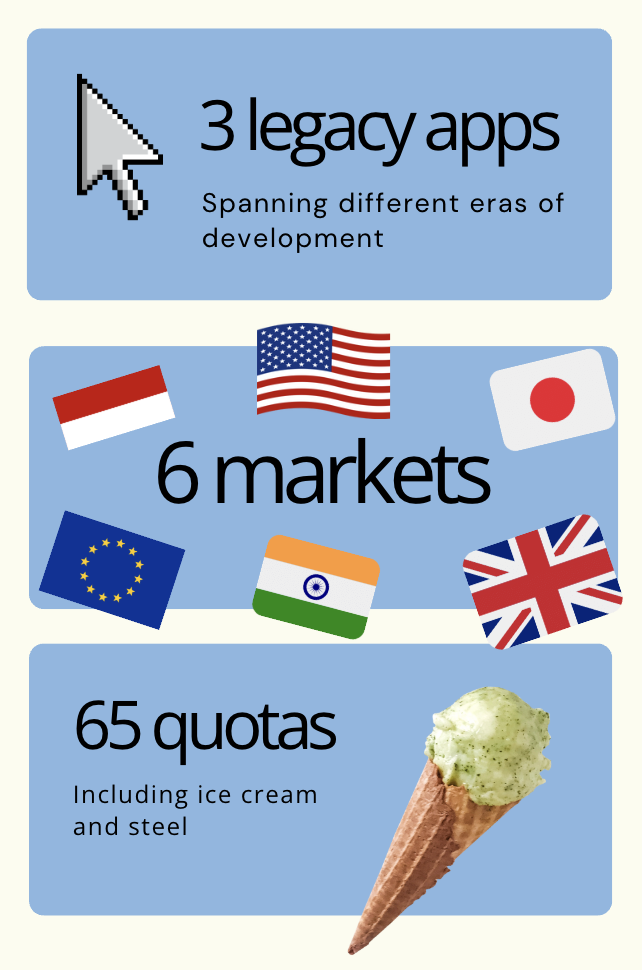
A complex project with competing requirments
My Role
I joined the team as the interactive designer, helping to consolidate five separate, siloed workflows into a single, extendable system for future quotas. My key responsibility was facilitating the UX process and owning the details of the user interface design. I'm proud that our work has enabled a key function for Australian exports and will be foundational.
Overview
Modern Quota System is an internal app used by staff within the Australian Department of Agriculture Forestry and Fisheries (AFF). It tracks quota balance against free trade agreements and issues certificates for exporters. We won a Good Design award for the work :)
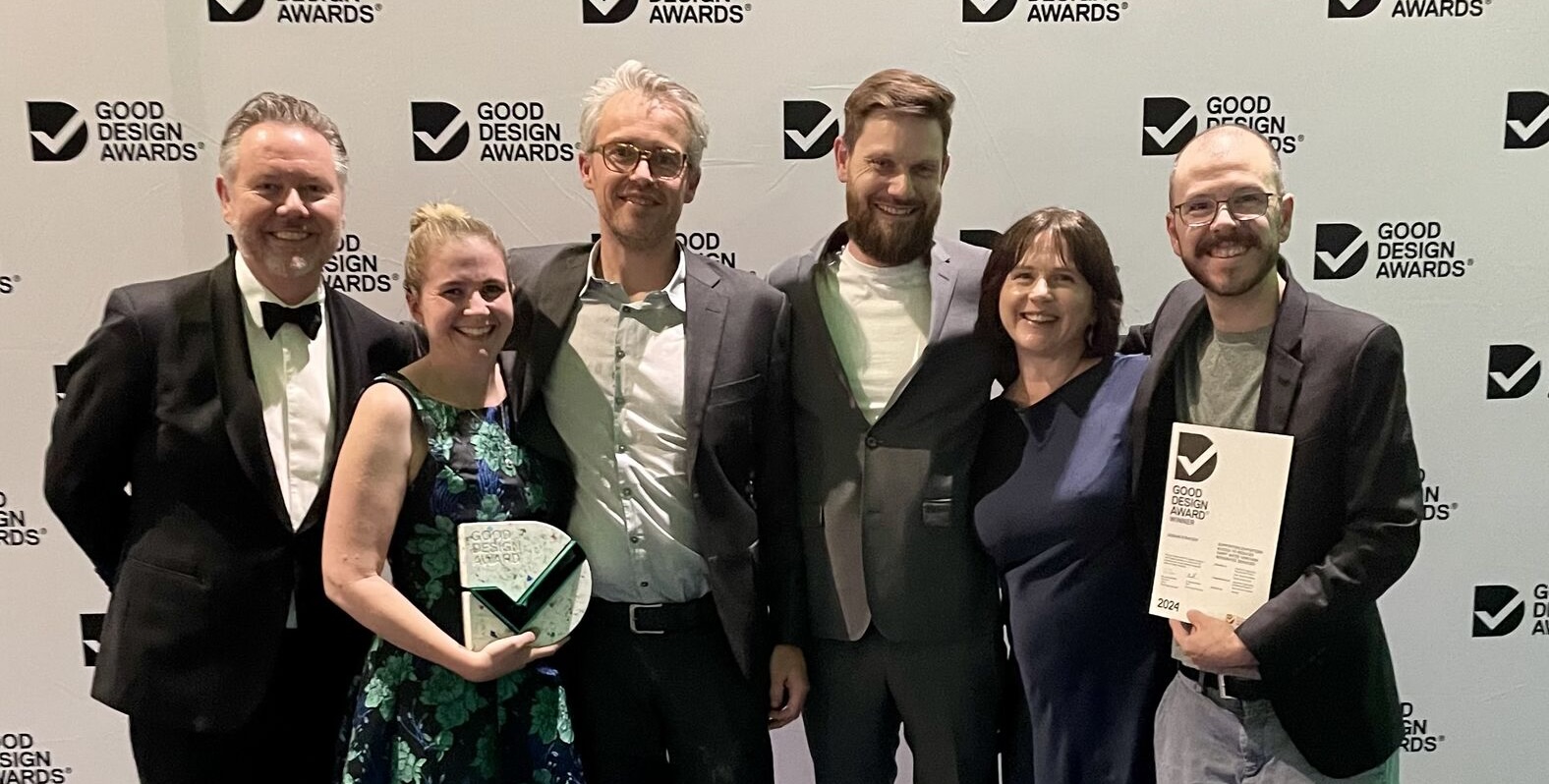
Title
Interactive designerTeam
7 wonderful peopleTime
2022-2025Situation
The Australian Department of Agriculture Forestry and Fisheries (AFF) was facing significant challenges with their quota management systems. Three legacy apps were causing inefficiencies for staff and exporters, each managing different free trade agreements for different commodities. These systems were duplicating similar functionality and creating complexity in how quotas were managed internally.
While the business team was capable of managing these inefficiencies day-to-day, the problem became painfully obvious whenever a new trade agreement was on the horizon. It was very expensive to update the systems to incorporate new agreements. Previous attempts to consolidate these systems had started and failed due to the difficulty in navigating all the different requirements of the legacy systems.
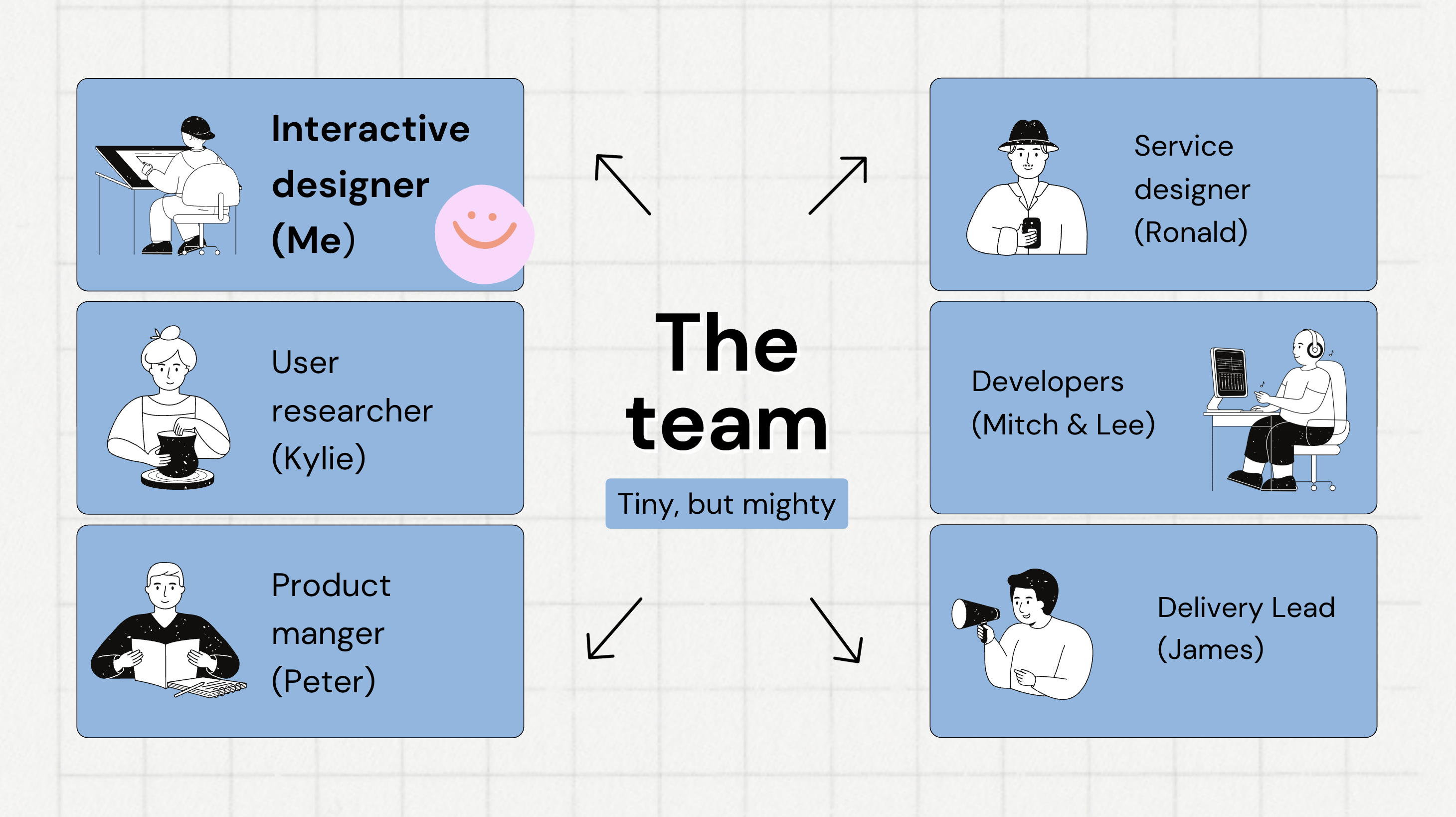
A pizza sized team for a country sized problem.
The Task
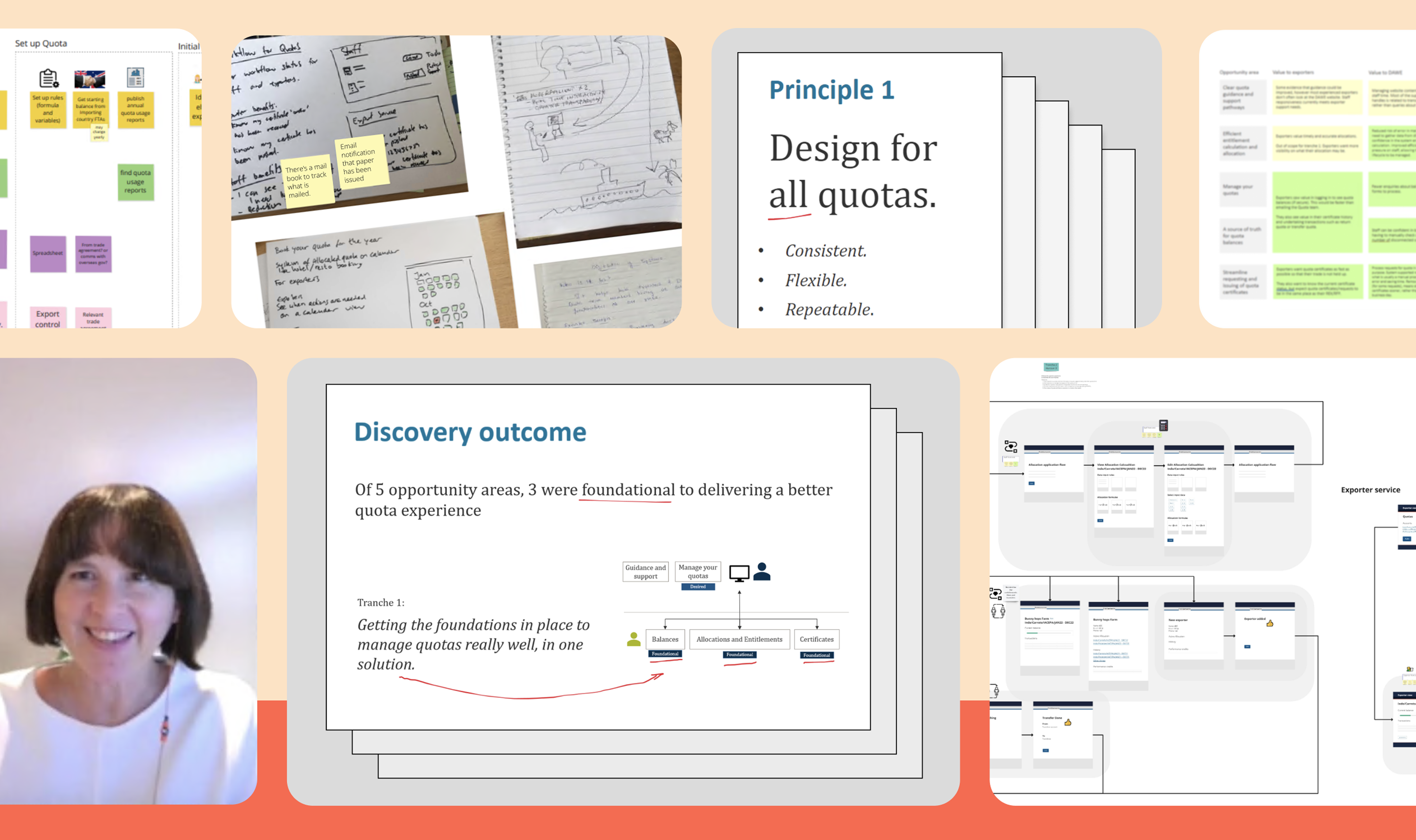
Our task was to consolidate these legacy systems into one modern system that would work for all quotas. This was a multi-year initiative with a small but dedicated team of seven full-time employees, including a product manager, delivery lead, two developers, a user researcher, and a service designer.
We began with extensive user research and requirements analysis of the three legacy systems. This involved:
- Working with business units to consolidate requirements from existing markets and agreements
- Collecting examples of certificates and creating detailed documentation
- Mapping out workflows as user flows
- Documenting legacy apps' existing APIs and schemas
- Building a shared language around certificate and quota agreement properties
The project followed a phased approach, with our first certificates being issued for the India market by December 2022. We then onboarded the UK and EU markets in June 2023, followed by Japan and Indonesia later that year. The US market was completed in January 2025.
Actions
As I reflect on the success of MQS, there are 3 key ways I had an outsized impact to the project's success:
1. Design Jams and Collaboration
Our Avatar component from Figma to Design System
One of my key contributions was facilitating regular design jams with the team. We would spend time together coming up with UI/UX concepts, iterating on them using whiteboarding tools, and making decisions collaboratively. It was important to me that everyone on the team had a shared ownership of the UI design. These sessions, short and sweet brought together diverse perspectives and very often were quick ways to get a decision made, and the team unblocked.
I would then take these concepts and consolidate them into Figma screens and components using the design system, making it clear what we were going to build and what the requirements were. Often this required thinking through all the markets and making sure our decisions would work for all quotas.
Our team collaborated frequently with the design system team, and the designer guild within the department. You can read about my postive experience with the design system in this separate case study.

A complex set of component variations with comments and feedback from the team
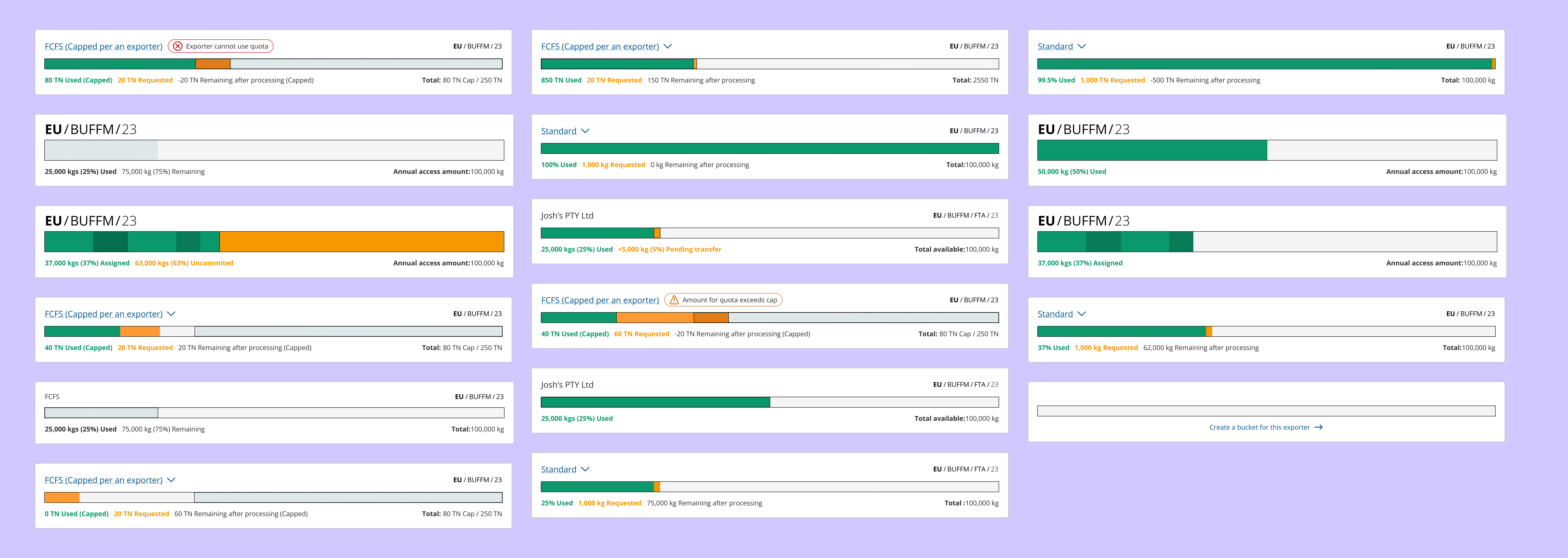
Variations of a component showing how amounts could be expressed
2. Prototyping and Validation
While the app wasn't interaction-heavy, prototypes played a crucial role in demonstrating how different screens would work across various markets and quotas. With 65 different quotas to manage, prototypes were an effective way to express the variations using real data and schemas.

Trying out amount bar with real data in Storybook.
Prototypes helped everyone understand the complexity of the system and reason about different scenarios. They were particularly valuable when working with stakeholders who needed to understand how the system would handle specific market requirements or quota types.
Exploring how MQS could have better interoperability
3. Data Analysis and Testing
Given that some legacy systems were inaccessible (we didn't even have access to their source code), I took on the responsibility of building scripts and automated tests to validate our workflows. Using my web expertise, I created tools to run requests through the Modern Quota System and verify that our decisions matched existing certificates and partner market expectations.
This data analysis work was crucial for building trust with the business team. We could demonstrate that the system would work as expected under different conditions, and that when we onboarded a new market, the transition would be seamless with no disruption for exporters.
I also worked closely with the design system team, sharing our experiences and advocating for the system across the program. This collaboration helped ensure our designs were accessible and consistent with the broader organization's standards.
Result
The Modern Quota System has delivered significant improvements across multiple dimensions. By consolidating the five separate workflows, we've reduced processing time dramatically through automation and streamlined workflows. Certificates can be issued in realtime, even on the weekends – whereas previously exporters may need to wait 1-2 business days for their quota certificate.
One of our proudest achievements was the seamless transition from legacy systems. With the support of the business team, we were able to onboard markets and exporters seamlessly, with no disruption to service, while creating a foundation that's ready for Australia's next free trade agreement.
Key Achievements
- Established a standard framework for implementation of future free trade agreements
- Reduced processing time from 1-2 business day to just 5 minutes for many requests
- Standardized quota request notifications for exporters
- Created consistent reporting tools for staff
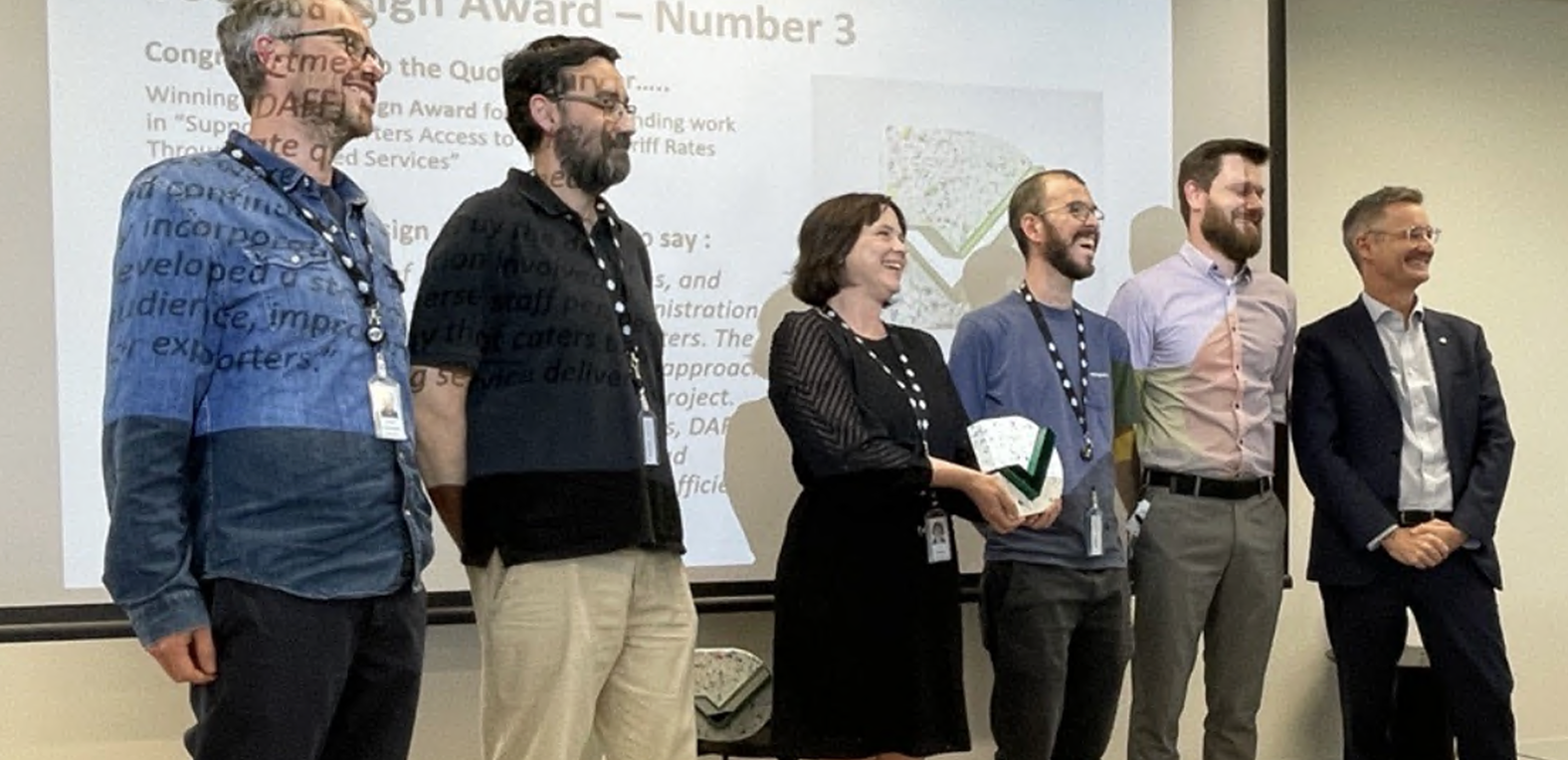
Members of the MQS team being congratulated by Adam Fennessy, Secretary at the Department of Agriculture on our Good Design Award.
